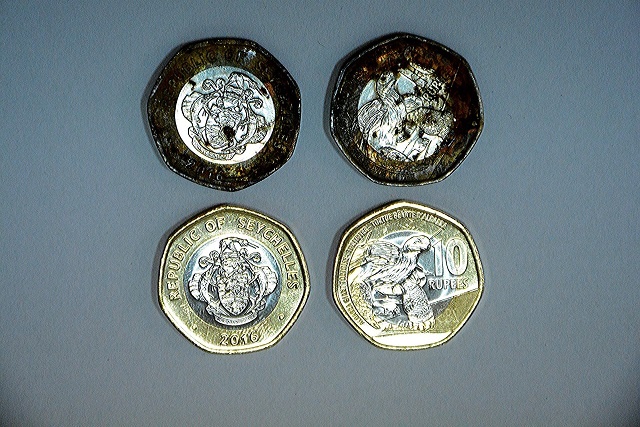Slight production defect may be responsible for Seychelles' rusted coins

The Central Bank of Seychelles said this week that a slight defect in production may be responsible for the rusting of some of the new ten rupee coins. (Seychelles Nation)
(Seychelles News Agency) - The Central Bank of Seychelles said this week that a slight defect in production may be responsible for the rusting of some of the new ten rupee coins.
CBS had sent the rusted 10 rupee coins to the UK for analysis at the end of January after receiving reports of the damaged coins in December last year.
The Head of Division of Banking Services, Mike Tirant, said that this is the preliminary findings in the investigation conducted by Royal Mint of the UK.
“The defect may have resulted in some of the coins to be susceptible to corrosion and at risk of rusting,” Tirant told SNA.
Tirant added that they are in contact with their partner to continue the investigation and establish why this happened and also what can be done to ensure the quality and durability of the coins that the central bank puts into circulation.
“We are still exploring different options with Royal Mint on how we can rectify this situation,” Tirant said.
Around 6,000 of the 10 rupee coins were put out in circulation in early December last year. To date CBS had collected around 130 rusted coins.
The Central Bank has a contract with Royal Mint for the production of over 2 million coins, among which 1 million have already been produced.
The metal used to produce coins is nickel plated steel and normally does not rust. However, rust can occur depending on what element the coin has been exposed to. The material which is brass coated is yellow in colour.
CBS reassures members of the public that it is committed to ensuring that the newly circulated coins are of the highest quality, and people who may still have the damaged ones can still exchange them at the Central Bank.





